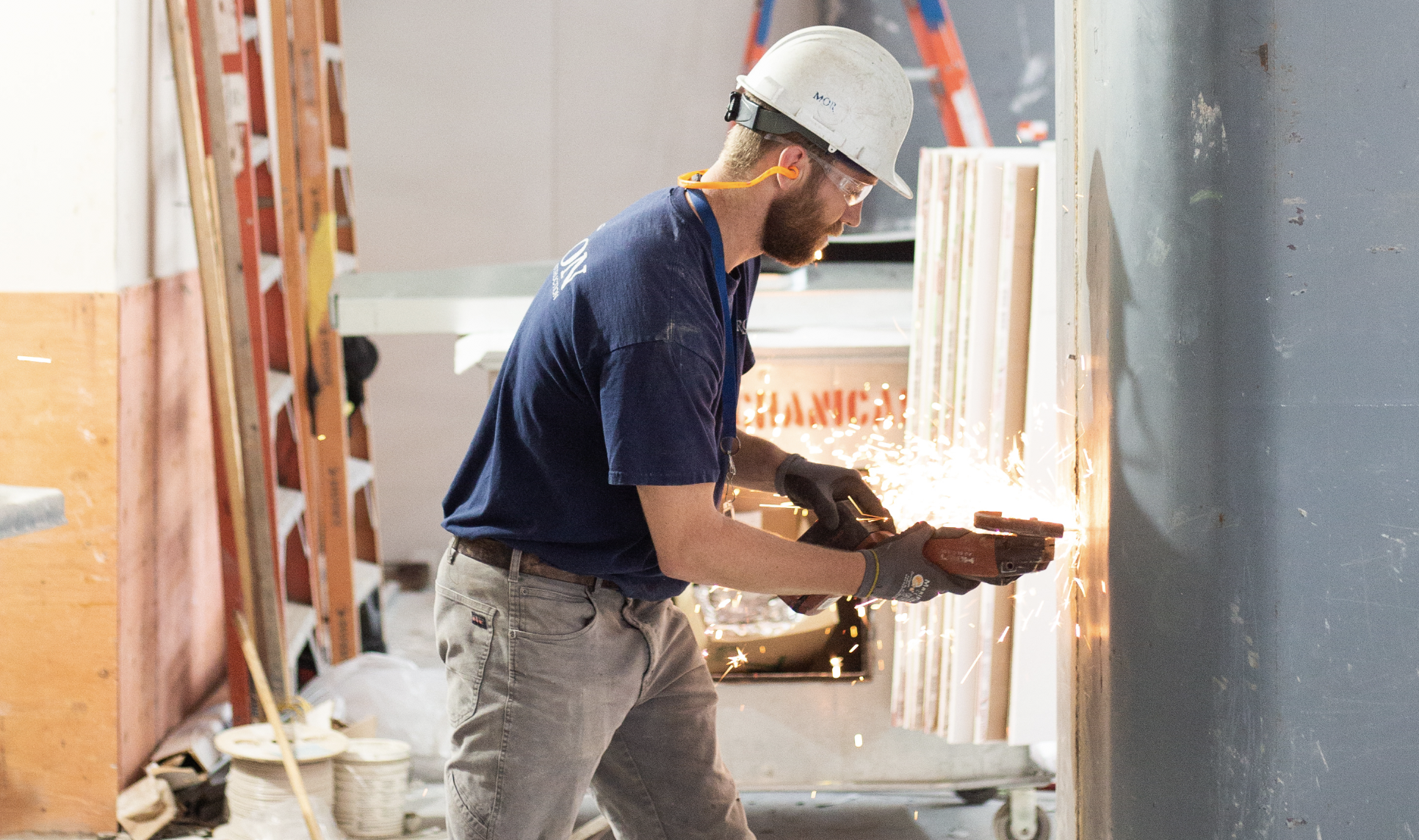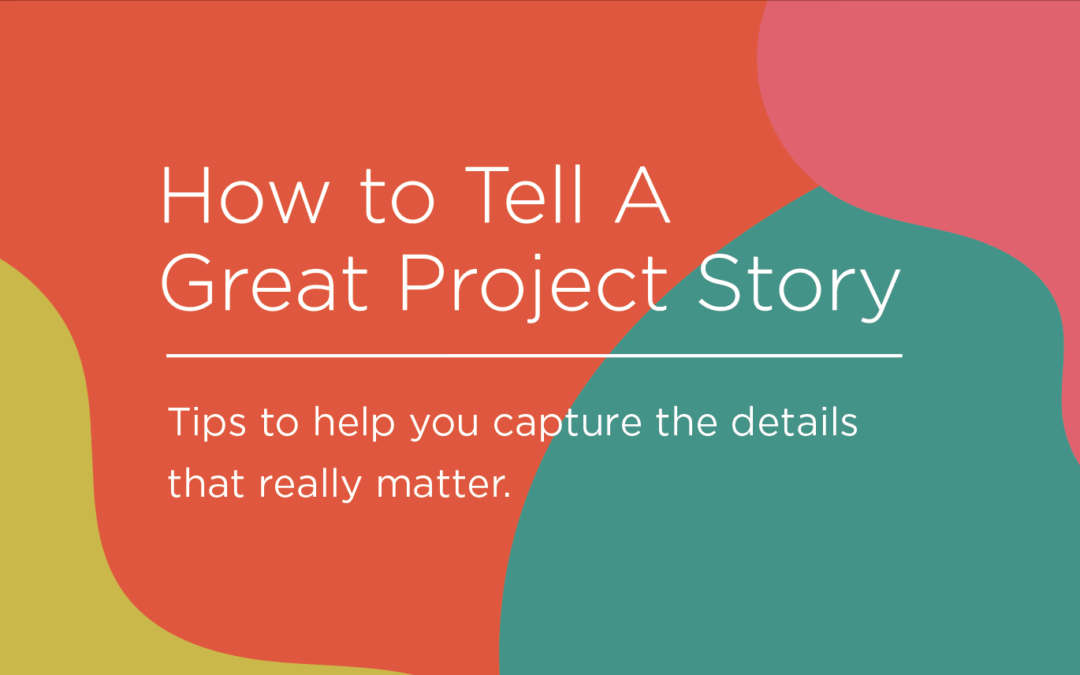Focus on the Why and How Throughout the Design and Construction Process
One of the main differentiators between humans and all other creatures is our ability to communicate through stories. The power of story is strong. As firms grow and get caught up in working in the business vs on the business, it’s easy to lose sight of how the work you do has added value – the why and how. The best way to show your clients what makes your firm different is through clear, compelling story.
Schedules and project roadmaps guide teams toward reaching milestones, but they only tell us what to build and when. They don’t tell us why or how we’re building. Stories, however, are great at explaining the why and how. No firm within the a/e/c industry merely builds to build, they build to solve a problem for their client, the facility users, and most importantly (in most cases) to support the community.
Start With the Why
Project leader always begin a project focused on the why. Design teams begin with the why to form and shape the design. The construction team begins with the why to ensure they are properly managing and building to meet the needs of the owner and end user throughout the course of construction and thereafter. So as a marketer where do you begin to capture the why? The answer is now. At the very beginning of the project when the team is also focused on the why, before the how has begun to formulate. Sit in the project kick-off meeting. Listen and learn about the goals of the owner. Try to answer questions like why are they doing the project, what is their desired schedule and why, why have they chosen to work with your team, etc. Next, begin interviewing your internal project team. Capture quotes of why they wanted the project, why they are the right team, why they were chosen, etc. Use video to capture passion, determination and excitement.
Integrating the How
During Design
Once the design begins to formulate in the minds of your team, this is the time to begin capturing information on the how. Begin by interviewing your team to learn how their design solves the problem of the client and meets the needs of the end-user. Leverage their inspiration and preliminary design assets to start creating short videos that illustrate their thought process. Use rough illustrations, hand written notes, textiles, preliminary renderings and later on sample building materials to build the story – continuously adding to it as the design gets farther along. Use music and imagery that inspires your team and evokes emotion and excitement. Begin connecting the dots of how these concepts will help solve the why of the project.
Let your team utilize what you have created to share the vision of the design with the extended project team – from initial owner approval to helping the construction team begin formulating a plan to bring the projects vision to life. Use this “vision video” to help unite and guide the team toward a shared vision. Once the design is complete you will have a full design story to help market the creativity, vision and work of your team.
From preconstruction though construction
Beginning in the preconstruction phase, document the challenges and accomplishments of the team throughout. From bid solicitation and outreach to the first full team meeting, be involved. Listen. Learn. Pay attention to how the team works together and the unique ideas they come up with to save time, money and meet the goals of the project. By the time that first shovel hits the ground you will already have a strong story that sells the value of your preconstruction services.
Once construction starts periodically check in with your on-site project team. Take time out of your day to visit project sites. Capture imagery and video of exciting work taking place. Make note of any challenges faced and ways they were solved. Become friends with your superintendents and field staff. They will help highlight unique aspects of the project and lessons learned. Their passion, excitement and drive will allow you to tell the project’s story through their eyes. This personal touch will allow you to better connect with your audience while evoking emotion.
At project completion
As the project team is getting ready for their final project walk-through and turnover, now is the time to discuss final accomplishments and recap on the project as a whole. Were there any unexpected last-minute changes or challenges? How does the team feel about the finished product and process of getting there? Looking back on the entire project is there any one thing that stands out in their mind that they will remember about this project forever?
During the buildings “opening”, while excitement is high, talk to end-users. Record their reaction to the new space. Ask them questions. How do they like the space? How will it meet their needs? Talk to the project owner as they are experiencing user reactions. How do they feel about the project? What in their opinion sets the project apart from others? What surprised them about the process?
More often than not I see marketers trying to tell project stories in a reactionary way. They have a proposal that’s due or their business development team is pursuing a similar project and they want to show how great this project was. Yes, at that point you can drop everything and throw something together but it won’t be as effective or have the same impact. As people move on to their next project and become overwhelmed with other work, they will rarely share the same sentiment, excitement and passion as they will if you take a proactive approach to documenting a project along the way.
Whether presented through a video, slideshow, or written story—your ability to proactively capture information throughout the course of the project will truly make or break your ability to tell a great story. So sharpen your pencils, dust off your video camera and tape recorder, throw on your steel toe boots and hard hat, and start telling better stories.

Key Takeaways
- Use the vision of the project as a communication tool to inspire, unite and drive your project team
- Focus on the why – why are you doing the project to begin with?
- Integrate the how – what differentiates your firm, team, and services? What unique solutions have you brought to the table?
- Continuously build your story from the beginning of the project to the end
- Leverage your assets in as many ways as possible – social media, RFP responses, email marketing, events, presentations, etc.
- Use a variety of mediums – video, sketches, mood boards, photographs, written word

